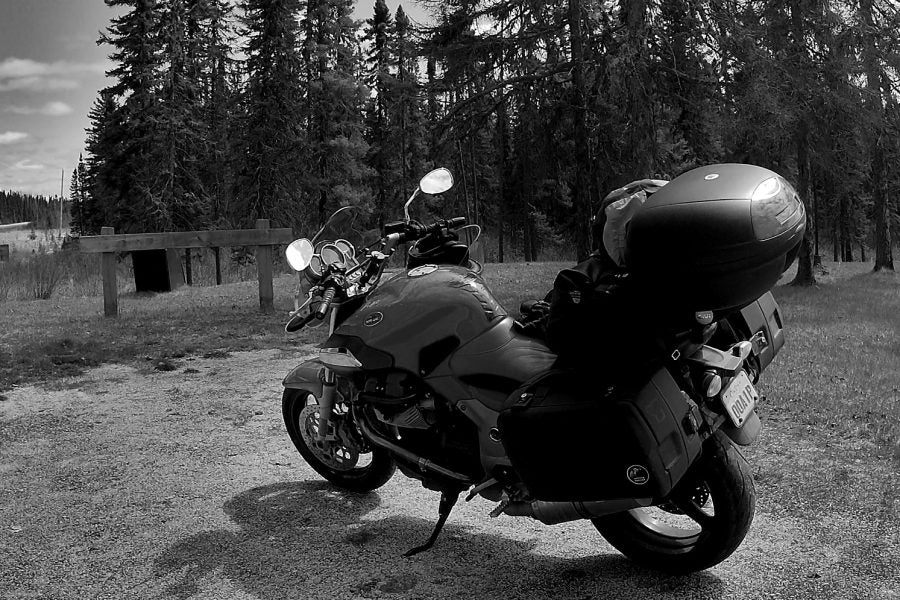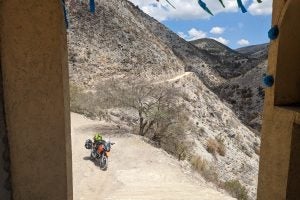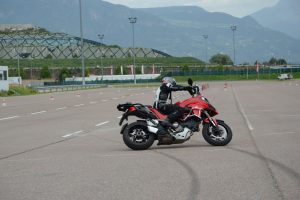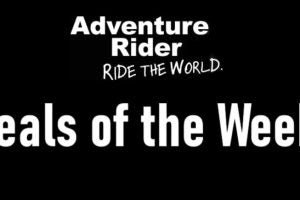Those of you with elephantine memories will remember that last month I was just about to set out for Canada’s western parts and was having trouble deciding on whether to take the 1986 Suzuki Cavalcade, the 2007 Moto Guzzi Breva or my regular long-distance companion, my 1972 Moto Guzzi Eldorado. Well, I set off on the Breva, but now I’m home less than a week later. I didn’t even get out of Ontario. Sometimes obstacles, both physical and mental get in the way.
My plan, such as it was, was to head across Ontario, up through the interlakes region of Manitoba to The Pass, Cranberry Portage, Flin Flon, then across Saskatchewan and Alberta via Prince Albert, Athabasca and Peace River then north heading for Yellowknife. Why Yellowknife? The name is intriguing. It sounds exotic, remote. Decades ago my wife spent a summer there working out of the Prince of Wales Heritage Centre while I was stuck back in Ontario. It’s a place I’ve never been. You’d think those things alone would have been enough to keep me heading that way. They weren’t.
The first day went well enough. I rode the pleasant Highway 128 across central Ontario to Bracebridge, north on the dreary Highway 400/69 to Sudbury, the up the attractively curvaceous Highway 144 to the Watershed gas bar, restaurant and “we’ve-got-just-about-everything” store before turning left onto the enticingly named Sultan Industrial Road.
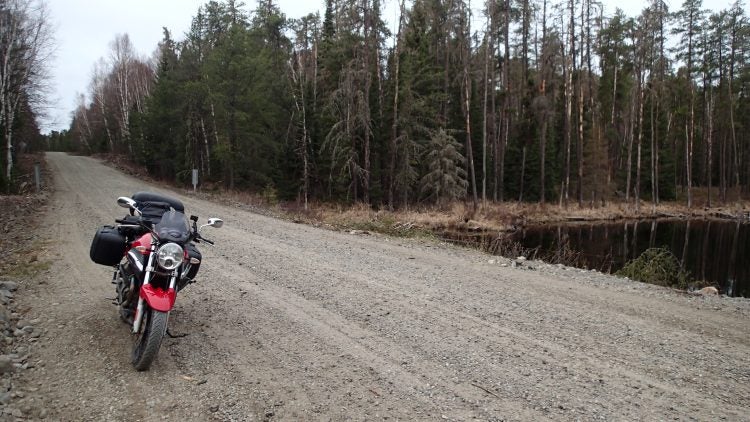
The new-to-Nick motorcycle, a Moto Guzzi Breda, was his steed for this trip instead of his old Eldorado. Photo: Nick Adams
It sounds worse than it is. It’s just a big, gravel haul road which heads west across northern Ontario for 75 kilometres before hitting pavement again at the metropolis of Sultan. In earlier days, when I was working in northern Ontario we would uncharitably refer to the “big” town of Chapleau (pop. 2,000) as the armpit of the province, and, perhaps unfairly, call Sultan (pop 45) the bubo in the armpit. It’s just a dusty little collection of shacks and houses surrounded by endless forest, vast clear-cuts, and recently replanted former clear-cuts.
I didn’t linger. I was heading for Wakami Lake Provincial Park, a few miles further on. A 7-kilometer gravel road leads into the park. It had only opened for the season the previous day and was deserted, which was fine by me. After dropping some cash in the honesty box, I chose a campsite by the water and settled in. There must have been some other people around, though, as there were two fishing boats parked at the dock and the nearby fish cleaning table had recently been used. One of the two bear-proof disposal bins was open containing a pile of fresh fish offal and skins which were gently attracting flies in the sunshine. If you wanted to send an olfactory invitation to every bear within 10 miles, that was the way to do it. I slammed the lid, checked it was latched, then wandered back to my tent for a wakeful night where every little rustle set my nerves on high alert.
It was chilly overnight. By 5 AM I was up, packed, and heading back down the gravel track, the Breva’s dash telling me it was 2º Celsius. I had nothing to eat for breakfast until I reached Wawa, 179 kilometres to the west. Deeply chilled and hungry, a breakfast sandwich and a large cup of coffee rarely seemed more welcome.

At least the bears didn’t get his tentsite… Photo: Nick Adams
I’d parked next to massive-wheeled Land Rover Defender with Swiss or German plates and every conceivable “heading-across-the-Sahara” add-on you can possibly imagine. It must be a shock to those international travellers to discover that their expensive and fully-equipped custom vehicle was completely redundant in Canada and that they’d have been far better off with a minivan. It reminded me of some of those big ADV bikes you see from time to time dripping with every conceivable rack, bag, guard and gizmo, that will rarely, if ever, see a dusty road.
Although it is a major highway and truck route, Highway 17 west of Wawa (or south, for that matter) passes through some undeniably lovely country. Forest-clad hills, lakes right next to the road, numerous streams and rivers, the long inland loop between Wawa and Marathon is delightful enough. Then, once the road rejoins the Lake Superior coast there are endless views across the broad expanse of the lake, high hills, sweeping curves and steep climbs and descents over the undulating landscape. Sadly, the Ontario Ministry of Transportation puts a greater premium on the economy and ease of truck travel than on aesthetics. All the most attractive sections of the highway are currently being blasted and ripped apart in massive road works. I understand the logic and need, but deplore the result.
With such negative thoughts in my head I drifted into a basic and unpretentious motel in Nipigon, settled in and pulled out my maps. Another day to clear Ontario. A couple more to reach Flin Flon, then, however many more it would take to amble through Saskatchewan and Alberta before heading north. I switched on the TV. The news was dominated by dire warnings of forest fires, fire risk, evacuations, drifting smoke and haze. A big fire was being reported near Cranberry Portage, close to my route. I got a sinking feeling in the pit of my stomach.

With warnings of fires ahead, Nick decided to turn back. Or was that the real reason?
Even if I didn’t encounter any active fires or huge lines of traffic of evacuated people streaming to safety, the areas into which I was heading to would be dull with haze. I suppose, instead of taking that northern route, I could have kept further to south, but I’d done that twice before and the prospect of a third time wasn’t appealing. I made no decisions. I decided to sleep on it.
In the morning, without really ever making a conscious choice, I found myself once again crossing the suspension bridge across the Nipigon River and heading up Highway 11. I’d turned for home. I’d lost my mojo. Perhaps it hadn’t been there when I started out. I’d never had a clear sense of where I was going, or why. I justified turning for home by arguing that I would be saving a small fortune in fuel, food and hotel bills that I could use later when I had clearer and more well-defined plans. The road home gave me plenty of time to beat myself up about it.
Two days later I wheeled the Breva into my garage. The first day towards home had been a lazy, easy, and mostly uninspiring 500 kilometer haul to Kapuskasing. The second was rather more of an endurance test, dicing it out with the transport trucks for just over 900 kilometers and the best part of 12 hours.
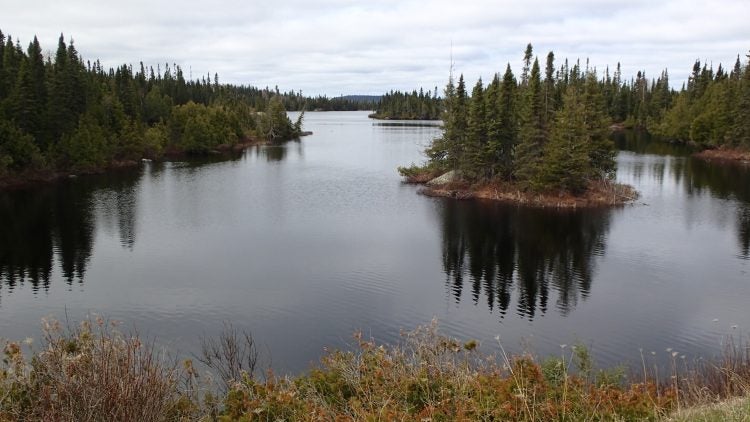
There had been pleasant scenery in parts of the trip, and no breakdowns, but nevertheless Nick turned home. Photo: Nick Adams
The Breva had been an effortless riding partner: fairly frugal, smooth, powerful and comfortable. Too easy? Perhaps. I wondered if I’d taken the old Eldorado the outcome would have been different. Would I have overcome my anxieties about its mechanical soundness and kept plodding west regardless of fire zones and haze? I certainly would have had plenty to worry about to keep me focused. Assuming the bike hadn’t come to a rapid and expensive demise in a clash of metal parts at the side of the road, there would have been daily oil checks, bolts to tighten, and minor adjustments to do to keep me engaged.
In the end I don’t think I can blame the choice of bike. I’d had a poorly defined and unspecific plan when I set out and lost what little enthusiasm I’d had for it along the way. On the long road home a single song – Simon and Garfunkel’s “American Tune” kept rattling around in my helmet.
“Kathy, I’m lost”, I said, though I knew she was sleeping
I’m empty and aching and I don’t know why…
Will my motivation return? I think so. Already I find myself looking at maps and dreaming of long days in the saddle. It’s only two days to the ferry across to Newfoundland and there are places there I’ve yet to visit. We shall see.


